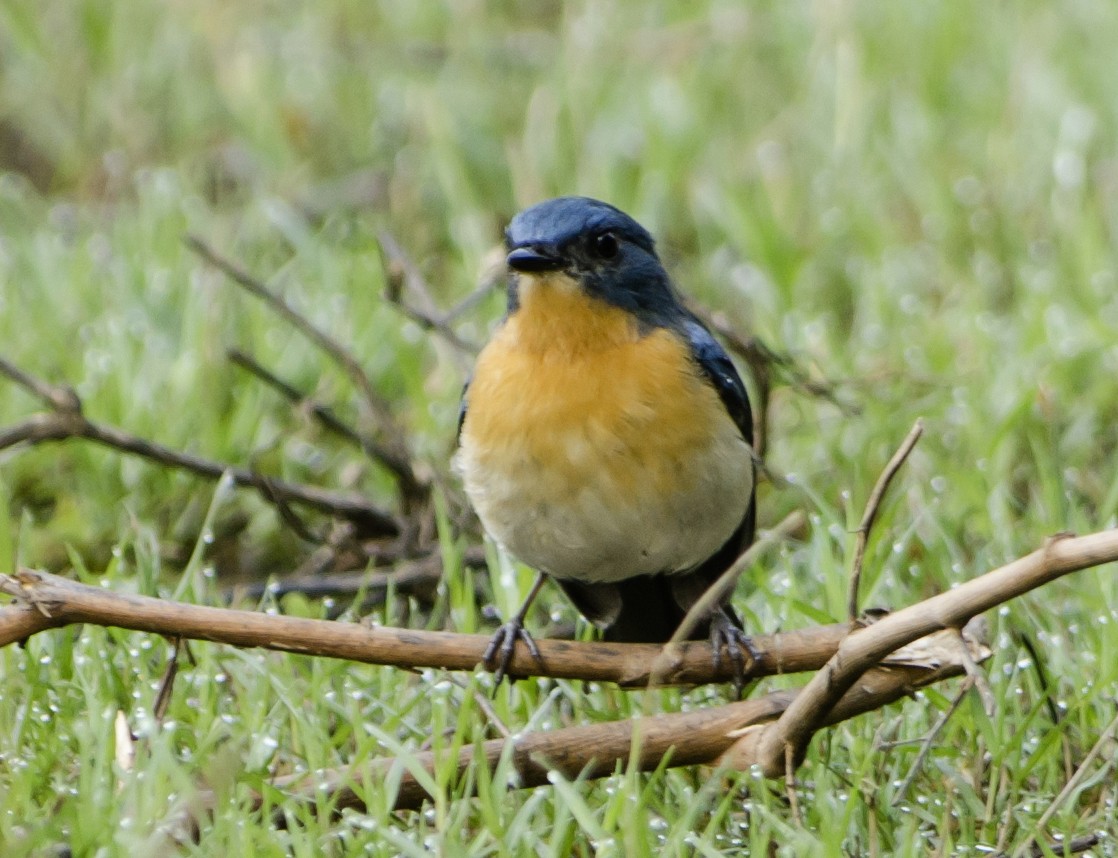Tickell's Blue Flycatcher
A species of Blue-flycatchers and Allied Jungle-flycatchers Scientific name : Cyornis tickelliae Genus : Blue-flycatchers and Allied Jungle-flycatchers
Tickell's Blue Flycatcher, A species of Blue-flycatchers and Allied Jungle-flycatchers
Botanical name: Cyornis tickelliae
Genus: Blue-flycatchers and Allied Jungle-flycatchers
Content
Description People often ask General Info
 Photo By Tsrawal , used under CC-BY-SA-3.0 /Cropped and compressed from original
Photo By Tsrawal , used under CC-BY-SA-3.0 /Cropped and compressed from original Description
Tickell's blue flycatcher is about 11–12 cm long. It sits upright and forages mainly in the overgrowth. The male's upper parts are bright blue, its throat and breast are red, and the rest of the underparts are white. The female is duller blue with a brighter blue brow, shoulder, rump, and tail. It hybridizes with the pale-chinned blue flycatcher (Cyornis poliogenys) in the Eastern Ghats of India and these hybrids have sometimes been called the subspecies vernayi. The juvenile is streaked and has a spotted mantle, scaly brown upperparts, head and breast, with just the wings and tail being blue. They have sometimes been known to feed even after dusk. Apart from flying insects they have been noted to occasionally glean crawling insects. The species shows regional variations in plumage and size and several of these populations have been designated with subspecies names. The nominate form is found in India, Nepal and Myanmar. The Sri Lankan population is separated as jerdoni (or nesea/mesaea said to be darker) In the past this species has been considered as a subspecies of the blue-throated blue flycatcher (Cyornis rubeculoides) which resembles this but has a blue throat. 
Size
15 cm
Colors
Brown
White
Blue
Nest Placement
Tree
Feeding Habits
Tickell's Blue Flycatcher primarily consumes insects, capturing them mid-flight or gleaning from the ground, including termites and earwigs. Seen foraging in garbage areas, tickell's Blue Flycatcher also hunts larger prey such as small vertebrates during breeding season, even taking bush frogs in Sri Lanka.
Habitat
Tickell's Blue Flycatcher's natural habitat encompasses lowland and submontane regions, primarily in open dry woodlands, secondary forests, and forest edges. The species shows a preference for groves, bamboo thickets, scrub along watercourses, and large wooded gardens. It is also adapted to human-altered landscapes such as abandoned plantations, cultivated land fringes, and village environs. Generally found at elevations up to 1500 meters, tickell's Blue Flycatcher remains in similar habitats across plains during non-breeding seasons, also occupying areas adjacent to rivers and lakes.
Dite type
Insectivorous
People often ask
General Info
Feeding Habits
Bird food type
Bird Feeder Type

Platform
Behavior
The metallic song of the bird includes a series of clicks followed by five or six notes that end abruptly. The metallic song consists of short clicks followed by five or six notes resembling that of the Spot-breasted fantail. Alarm calls include churr and clicking notes. It is a wary bird and is easily observed in small gardens too. It is a forest-loving species which is found in thick cover and shade, and particularly haunts the banks of wooded streams. They feed mainly by capturing insects in flight but their prey include other insects such as termites and earwigs that may be gleaned or picked from the ground. Now they are being observed inhabiting garbage places. During the breeding season, they may take larger prey including small vertebrates. A bush frog has been reported as prey in Sri Lanka. The breeding season is April to August (March to June in Sri Lanka). It nests in a hole in a tree or amongst rocks that is lined with fine grass and fibres and lay 3–5 eggs. 
Distribution Area
Tickell's blue flycatcher breeds in dry forest, scrub, bamboo and gardens. 
Species Status
Not globally threatened.
Scientific Classification
Phylum
Chordates Class
Birds Order
Perching birds Family
Old world flycatchers Species
Tickell's Blue Flycatcher